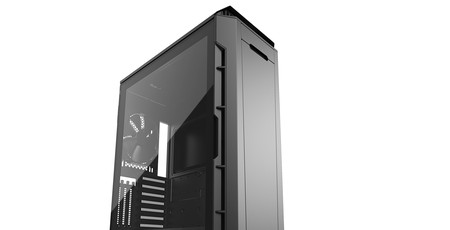
Manufacturer: Phanteks
UK price (as reviewed): £134.99 (inc. VAT)
US price (as reviewed): $149.99 (exc. tax)
If the case below looks a little different, that's because it is. No, we haven't missed a bit in our post-processing either - that little black nobbly bit on the side of the case is meant to be there too. There's a lot going on that's new with the Eclipse P600S, which is actually based on the pricier Evolv X chassis, yet despite the case offering some decent scope for both air- and water-cooled system building as well as dual-system support, it costs just £135.
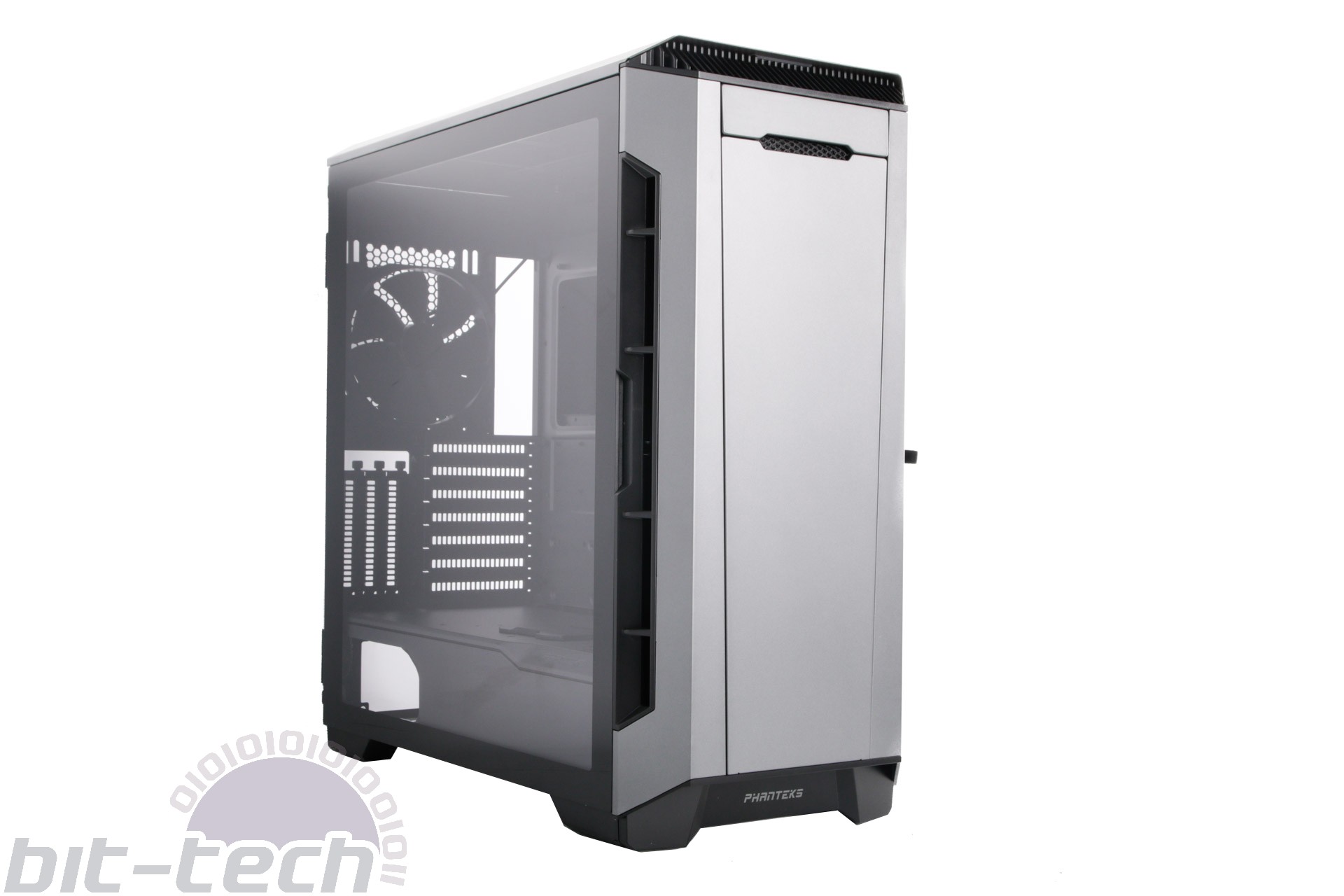
Phanteks has decided to cater to a range of enthusiasts with the Eclipse P600S and not just in terms or air or water. It's included two magnetic panels that sit in the roof and front section, which are easily removable and allow the case to switch between low-airflow/low-noise and higher airflow/more noise configurations. It manages this without making it look like it fell out of the ugly tree in either configuration too, which is quite a feat.

This is partly thanks to a new mesh material that replaces the usual perforated metal and is made up of woven strands, cutting down on airflow restriction by using wider openings while still acting as a dust filter. However, there's a removable dust filter behind the front section too, as the mesh sits in the front of the case, while there are additional vents in the sides that provide much needed airflow when the front vent is closed.

Thankfully, this new material is durable too, and even running our fingers across it with a decent amount of pressure didn't see it deform or catch like you might assume it would, plus there's no way to scratch it like you might with a metal or glass panel.

The case comes in a quartet of options: black, white and black, the pictured gunmetal grey, and a non-windowed black version - for us the gunmetal grey is where the money's at, but each to their own. To keep the clean looks, there's a flip-up front panel that hides the usual ports and buttons with the noteworthy addition of a USB 3.1 Type-C port that requires a proper USB 3.1 header on your motherboard to work.
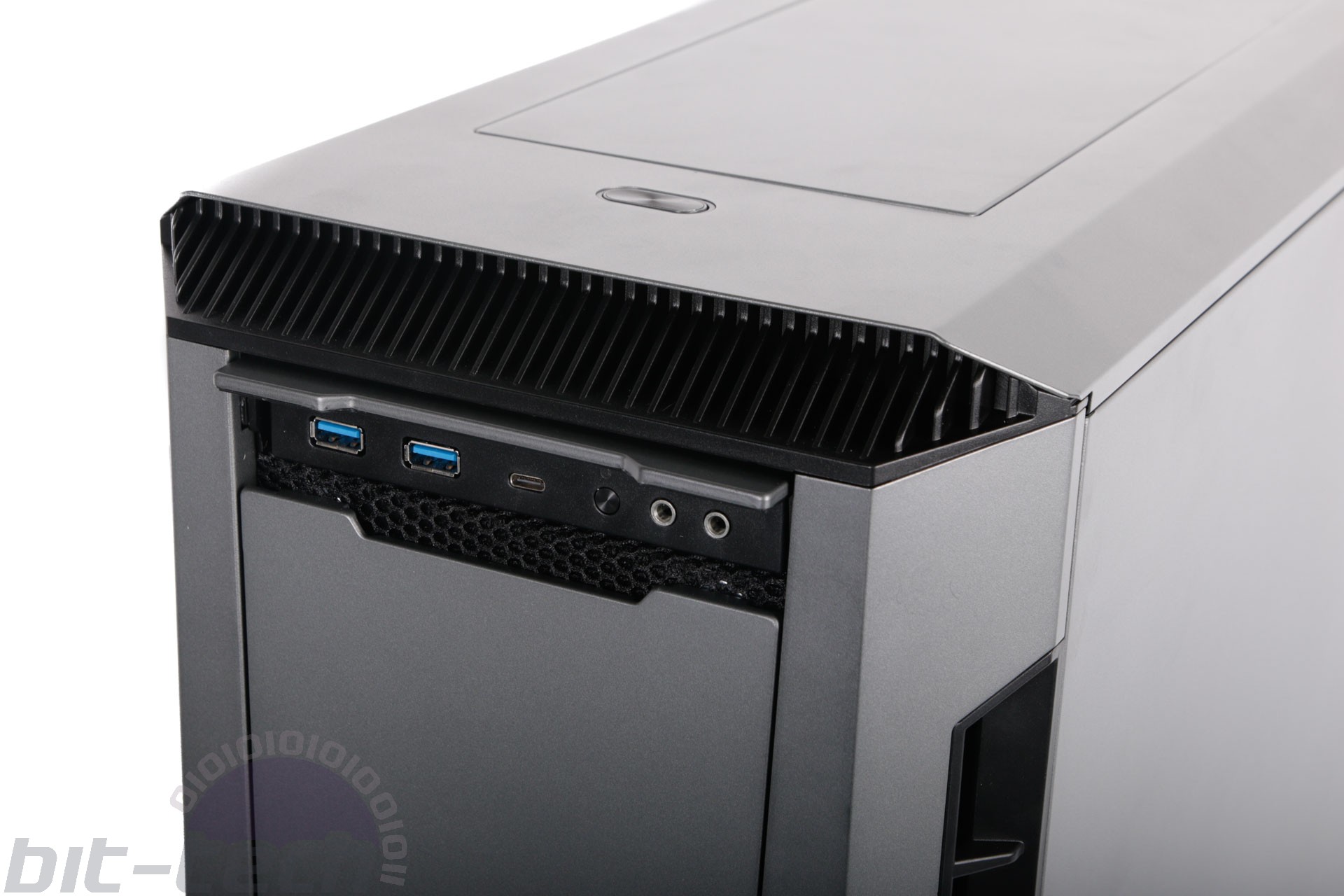
There are a lot of magnets at work in the Eclipse P600S, with some powerful examples in the rear-hinged side panels that allow them to be tool-free. However, accidentally popping open isn't something that's likely to be an issue; the magnets are so strong that Phanteks includes a pull cord for opening the far panel, else you'd need to find a nearby screwdriver to pry it open since it sits flush with the case. It's not overly stuck when closed, but the force is enough to keep the panel closed even with with a few tidied cables pressing against it from the inside.
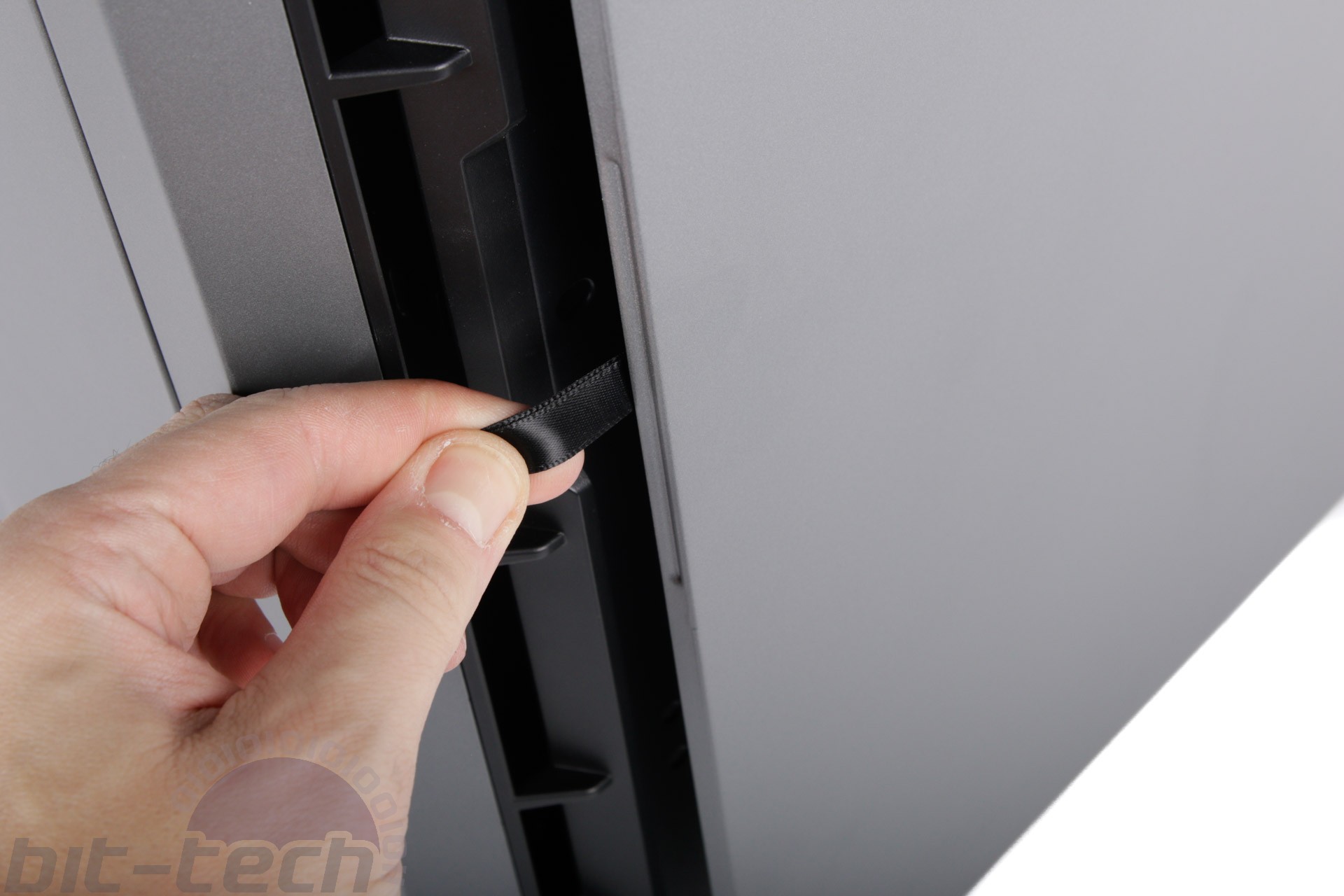
The PSU also sports a removable dust filter of its own that pulls out easily from the rear, and the case is raised a couple of centimetres using rubber-bottomed feet. The 52cm depth and 51cm height plus CPU and GPU limits are identical or close to it compared to the Evolv X, with the main difference, apart from the odd design tweak, being the use of steel rather than aluminium, adding a couple of kilograms to the weight.

Of the extras mentioned below, the fan hub and dust filters are fairly self-explanatory. The GPU anti-sag plate, though, actually solves the issue at its source i.e. the GPU backplate prongs that slot sideways into the case. These are loose-fitting on most cases - including the P600S - and with weighty GPUs they ride up in their mounts, causing the GPU to sag downwards. This is not an issue with vertical GPU mounts, of course, but it's definitely a problem with heavy air- and water-cooled cards. The anti-sag plate stops this movement by screwing over these prongs from behind the motherboard tray, so there's no need for a separate anti-sag bar to sit under the GPU in the main chamber.
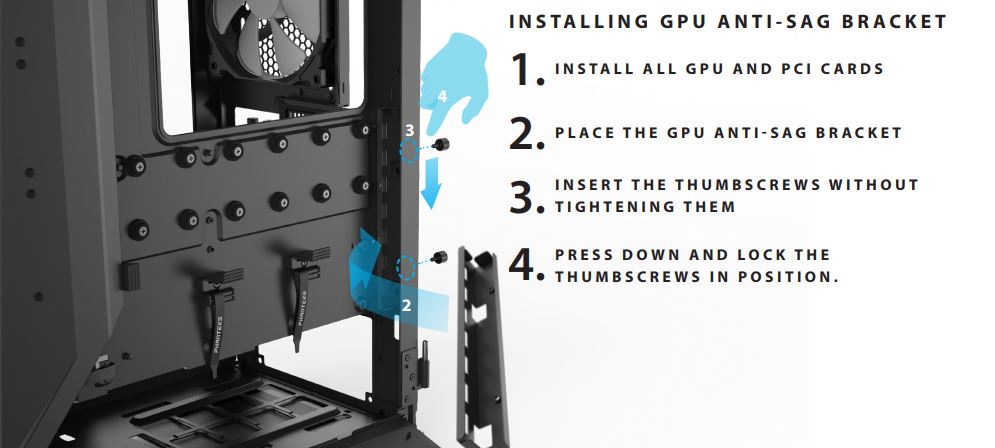
While the P600S supports dual systems, you'll need a few extra components to do this, as they're not included in the box. To start with, the second system is limited to mini-ITX motherboards, with Phanteks offering an ITX upgrade kit that includes a motherboard mount that sits in the roof of of the case and sports its own power button. You'll also need Phanteks' 90cm riser cable extender, which will allow you to mount a discrete GPU for the second system vertically on the PSU cover - not needed if you intend to have a low-power second system with no discrete GPU, but the manual covers this upgrade in a decent amount of detail.
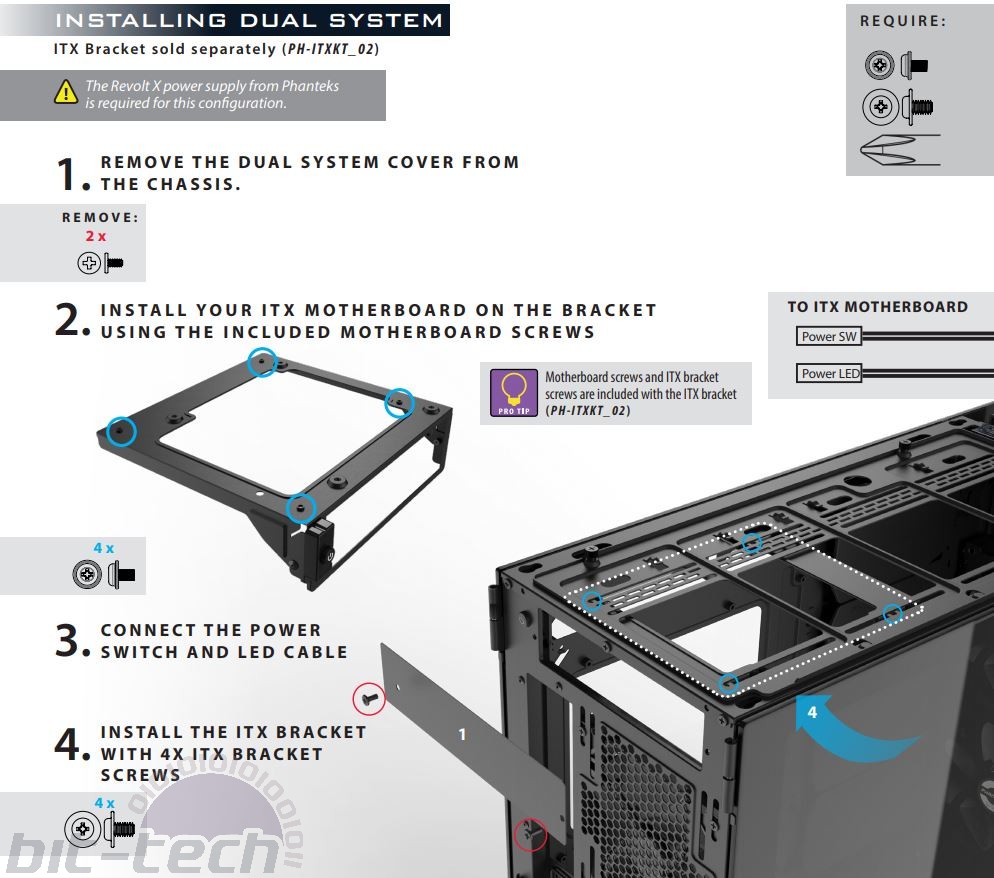
Specifications
- Dimensions (mm) 240 x 520 x 510 (W x D x H)
- Material Steel, plastic, tempered glass
- Available colours Black, white/black, gunmetal grey
- Weight 13.5kg
- Front panel Power, 1 x USB 3.1 Type-C, 2 x USB 3.0, headphone, microphone
- Drive bays 4 x 3.5"/2.5", 3 x 2.5"
- Form factor(s) E-ATX, ATX, micro-ATX
- Cooling 3 x 140mm/120mm front fan mounts (2 x 140mm fans included), 1 x 140mm/120mm rear fan mount (fan included), 2 x 140mm or 3 x 120mm roof fan mounts (fans not included)
- CPU cooler clearance 190mm
- Maximum graphics card length 435mm
- Extras Removable dust filters, seven-port PWM fan hub, anti GPU sag adaptor, vertical GPU mount

MSI MPG Velox 100R Chassis Review
October 14 2021 | 15:04

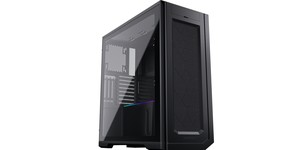
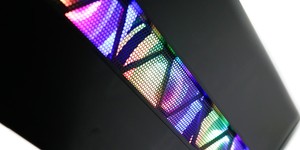
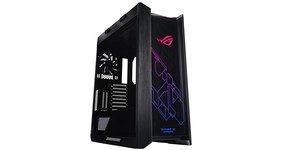




Want to comment? Please log in.